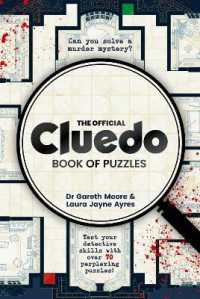Full Description
The renewal of medical curricula generally arises from emerging pedagogies (e.g. problem-based learning), new technologies (e.g. high fidelity simulation), or prevailing sociocultural forces (e.g. complexity of health care delivery and team-based care). Approximately 15 years ago, a team of physicians and administrators sought to take this further: by considering the very nature of medical practice and the patient-physician relationship that is the context and conduit of caring and care, they restructured the composition and function of medical education. This book, Physicianship and the Rebirth of Medical Education, is the authoritative publication on the philosophy, design, and implementation of this new curriculum.
From first year to graduation, this book reimagines the education of medical students in its entire scope. It discusses the epistemology of clinical practice and pedagogical methods and addresses pragmatic issues of curricular implementation. The educational blueprint presented in the book rests on a new definition of sickness, one focused on impairments of function as the primary issue of concern for both patients and their care givers. This perspective avoids the common shift of medical attention from persons to diseases, and thus provides the basis for an authentic and robust patient-centered mindset.
The title of the book refers to a "rebirth." This implies that there was a previous "birth." Indeed, the critical ingredients of medical education were articulated historically and many features emanate from a time-honored apprenticeship model. This book recognizes in William Osler and his "natural method of teaching the subject of medicine" the foundational elements for teaching physicianship. The practice of medicine is indelibly relational and, in turn, medical education is an intellectual and an emotional journey that is rooted in clinical relationships. As this book shows, medicine must unfold in the context of patient care; patients, not diseases, should be the center of attention.
Contents
Preface
Introduction
SECTION ONE Clinical Medicine
Chapter 1 Health, Illness and Disease
Chapter 2 Functioning
Chapter 3 The Goals of Physicians
Chapter 4 Person-centeredness
Chapter 5 The Doctor-Patient Relationship
Chapter 6 The 'Good Doctor'
SECTION TWO Teaching the Clinical Method
Chapter 7 The Clinical Method and Subjectivity in Medicine
Chapter 8 Medical Education: Highlights of the Past Two Centuries
Chapter 9 Competency-Based Education
Chapter 10 The Rise and Fall of Clinical Teaching
Chapter 11 Teaching a Clinical Method Adapted to Contemporary Medicine
SECTION THREE The Physicianship Curriculum
Chapter 12 Building on Past Experience
Chapter 13 Theory
Chapter 14 Educational Blueprint: Phases I to IV
Chapter 15 Phase I - The Person
Chapter 16 Phase II - Sick Persons
Chapter 17 Phases III and IV - Doctoring
Afterword
Epilogue by J. Donald Boudreau
Epilogue by Eric J. Cassell
Epilogue by Abraham Fuks
About the Authors
Acknowledgments
Index








